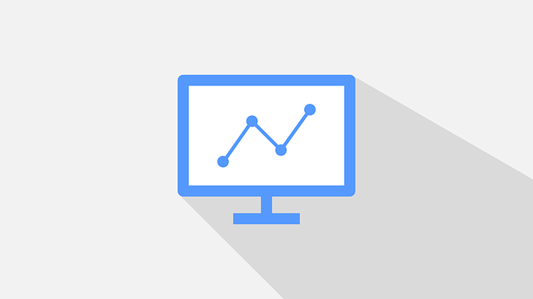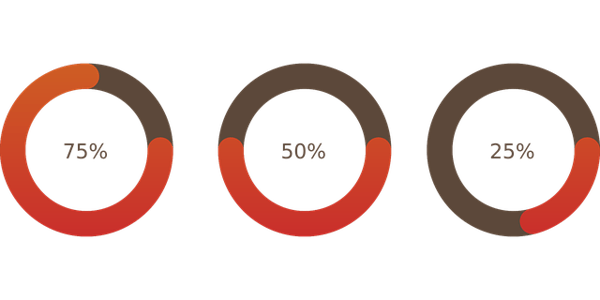Most HR teams are engaging in some form of workforce planning. This is the process of aligning the organization’s resources, competencies, and talent with its strategies and objectives. Workforce planning models are used to make this process more efficient and to ensure the necessary roles are filled by people who have the necessary skills.
However, this is just one part of workforce planning. It’s also important to achieve the understanding required to be certain that your organization is operating efficiently when the business ecosystem is in a state of constant change. This is where operational maturity models come into play. This is an indicator of your organization’s current capabilities as well as its ability to improve continually.
What Is a Workforce Planning Maturity Model?
A maturity model is a tool you can use to assess how well developed your workforce planning practices are. You use maturity models in the workforce planning process to determine how efficient your workforce is right now and identify the skills and competencies required to achieve a desired level of efficiency.
Workforce Maturity Models to Help Gauge Operational Maturity
There are a few different maturity models that can be used in the workforce planning process. Here are two that have proven to be effective:
1. Maturity Curve Model

This measures maturity along a four-point curve. An organization’s workforce may be:
- Reactive: Actions and decisions are undertaken as problems arise
- Standardized: Workforce planning (WFP) is sporadic and limited
- Focused: WFP is consistent but not using modeling or scenario planning
- Strategic: Achievement of a consistent, data-driven approach to WFP
At the lowest point in the curve, the organization is either not engaged in workforce planning or is only engaged in sporadic, crisis-driven planning. At the highest level, workforce planning is used to align the company's team members and hiring strategy with desired outcomes.
2. Capability and Maturity Model

This model uses five stages or levels to show the progress of a workplace along the journey to full maturity. These levels are:
- No Planning: Company reacts to workplace issues and shortages as they occur
- Ad Hoc: Single or intermittent WFP that creates singular, short-term strategies
- Unit Level Processes: WFP is in place but only for key business areas
- Enterprise Level: Long- and short-term WFP strategies and models at org. level
- Strategic: WFP strategies that also incorporate trends and scenarios are applied
While there are differences between these two standard maturity models, both begin at a stage where no planning occurs. Any issues with the workforce are revealed when there is a crisis, and steps to deal with it are reactionary.
As progress is made, WFP evolves from short-term strategies that often impact single business areas to more consistent ones that are applied more universally. Finally, the ultimate level of organizational maturity happens when WFP takes into consideration both internal and external triggers, uses current state and predictive scenario modeling, and is based on data collected over a significant period of time.
Are there differences between capability and maturity models?
When assessing operational maturity, it’s important to understand that maturity and capability represent two different concepts. Maturity shows how capable an organization is of achieving ongoing workforce improvements. Capability reflects what the organization is currently capable of where workforce planning is concerned.
There are other operational maturity models as well. However, like the two listed above, these tend to be slight variations that use the same processes to analyze maturity levels. Additionally, many organizations develop proprietary models for assessing operational maturity. However, these tend to be based on known models.
How to Gauge Operational Maturity
It’s important that operational maturity is accurately measured. This requires an objective analysis. The goal is to determine:
- Is workforce planning being implemented at all?
- What are the current goals of workforce planning?
- What is the scale of workforce planning?
- How are tools and data being integrated into workforce planning?
Is workforce planning being implemented?
At first glance, this is a simple binary question. At the broader organizational level, you’re either engaged in the workforce planning process or not. However, there may be individual teams or divisions that are applying at least some WFP processes while others are not applying any of them. This is why assessments are important.
Don’t assume WFP is happening or not. Instead, make use of surveys, polls, and audits to gain reliable insights into how your company is dealing with workforce challenges at every level.
What are the current goals of workforce planning?
When workforce planning is being implemented, why is it occurring? What are teams, departments, and the organization trying to accomplish? For example, if workforce planning is taking place as urgent issues arise, that indicates a lower level of maturity than if it’s being implemented more consistently or strategically.
Ask those who are or have engaged in workplace planning to provide some context. What drives their WFP activities? What have they been attempting to accomplish with WFP, and what have they actually accomplished?
What is the scale of workforce planning?
One way to measure workforce planning scale is to determine how broadly it’s being applied across the organization. At the highest level of maturity, workforce planning is fully deployed at the organizational level. At the lowest, it may be used in just one or two areas with no consistency.
Another consideration when using operational maturity to inform your planning is the focus of the implementation. Is WFP being solely used as a tool to deal with workforce crises, improve current operations, or model future workplace strategies?
Different organizations will come up with wildly varying assessment results from this. For example, one company may find that they are using WFP across the entire organization. However, the depth at which they are using it hasn’t matured beyond crisis management.
Another organization might analyze operational maturity and find that they have only reached the standardized or unit level of WFP consistency and scale. At the same time, assessments might uncover that the departments and divisions that are using it have achieved fairly significant maturity.
How are tools and data being integrated into workforce planning?

True operational maturity can’t be achieved without the use of data and tools. Data includes all information that is collected, stored, and analyzed for the purposes of:
- Assessing the workforce
- Addressing workforce-related crises
- Using workforce planning to achieve organizational goals
- Engaging in modeling and scenario-based planning
Workforce planning data can be obtained from a variety of internal and external sources. For example, a company’s internal hiring data is exceptionally important to WFP. So is data on worker attrition. External data is important as well. This is required to engage in strategic workforce planning. This is data that illustrates industry trends, for example, that can impact workforce planning.
Workforce planning tools are any instruments that human resources teams can use to assess and analyze workforce needs and capabilities. It’s essential for high-performing teams to use these tools to complete various workforce planning steps and answer questions that occur during workforce planning.
These tools can be used for scenario planning, understanding current needs, gap analysis, and more. There are a variety of mapping tools, HR dashboards, performance assessment tools, benefits and compensation analytics instruments, etc.
Additionally, there are tools that have multiple uses that also include workforce planning. One of these is organizational chart software. This is a tool that can be used to understand an organization’s current structure, how work and information flow from one business area to another, roles and responsibilities, capabilities, and gaps.
An organization’s use of tools and data can reveal important information about operational maturity and workforce planning. When a company has integrated tools and data into its WFP processes, this is a good indication that the company is:
- Committed to workforce planning
- Has buy-in from stakeholders to invest in workforce planning
- Is going to be better prepared to move through greater levels of workforce maturity
Of course, this is in addition to tools and data being used to make the WFP process more efficient and effective.
How Operational Maturity Impacts Workforce Planning
Operational maturity and workforce planning are both deeply intertwined. Workforce planning can’t progress without some level of operational maturity. At the same time, it’s workforce planning that leads to operational planning. Here are a few examples.
A company hasn’t engaged in any level of workforce planning. Currently, when an internal or external event happens to trigger an issue with the workforce, the company deals with the crisis as a one-time event without connecting that event to previous or future workforce events. Additionally, the reactive workforce planning that does occur is isolated to the team or workgroup.
In the above case, it would be impossible to accelerate workforce planning from that point of virtual non-existence to a strategic, enterprise-wide effort.
Now, imagine an organization engaging in some level of ad hoc workforce planning. That company would also not be ready to engage in data-backed scenario planning or other strategic WFP processes. However, it would be ready to move toward workforce planning at a deeper level within key business areas in the organization.
Organizations that are most successful at workforce planning must obtain an objective and accurate understanding of their operational maturity levels. Without this, workforce planning efforts are going to be uneven at best or completely ineffective at worst. Fortunately, this is where operational maturity models are so useful.
What Are Operational Maturity Roadblocks and Challenges?
As you attempt to understand your organization’s level of operational maturity, there are some issues that could make this process difficult. Some of these are:
- Lack of data to provide important insights into workforce planning
- Inability to gain resources required to properly assess maturity
- Incomplete or total lack of buy-in from stakeholders
- Poor cooperation and siloing between business areas
- Risk of incorrectly assessing operational maturity
- Challenges in selecting the operational maturity assessment model to use
- Insufficient time to collect data
- Lack of data sources involved in the workforce planning process
Operational maturity models are valuable tools in the workforce planning process. However, it’s important to keep in mind that workforce planning is an iterative process. It requires continual assessment and review, and modifications should be made as needs and shortcomings emerge.
Understanding Operational Maturity Level Is Key to High-Performance Teams
Workforce planning is a process that allows your organization to mature in ways that enable you to build a team that isn’t just capable of handling current challenges but is also aligned with organizational goals for the future.
Additionally, workforce planning “future proofs” your human resources to be capable of taking on a range of opportunities and challenges that may be created by a variety of internal and external forces.
Understanding operational maturity depends on choosing the right model and conducting an effective assessment. Additionally, organizations must make use of the tools available to them to get the most accurate outcomes. This is where in-depth organizational charts can be a valuable addition to the process. They are useful in current state assessments and in strategic planning.
Many organizations make Functionly a part of their workforce planning process - give it a go today for free.




